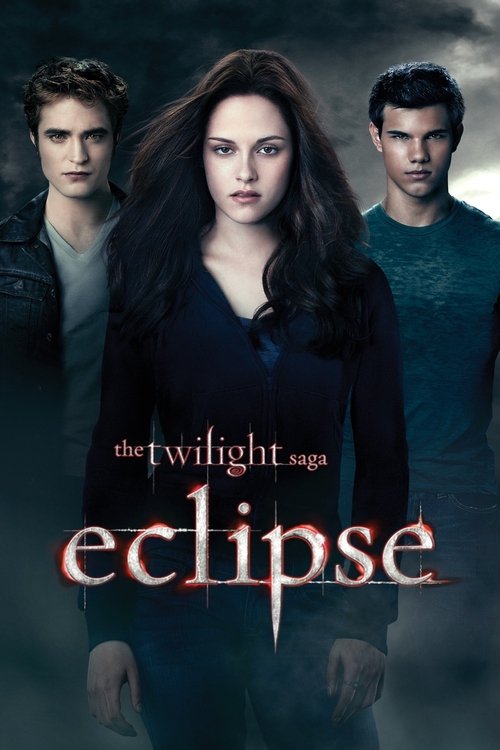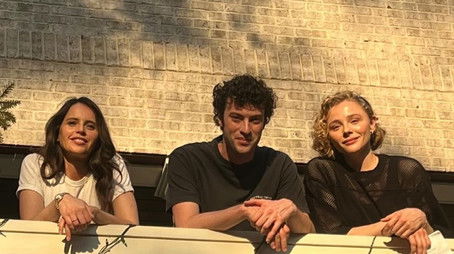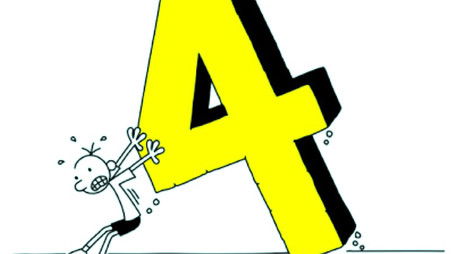
Ask Your Own Question
What is the plot?
More Movies Like This
Browse All Movies →What is the ending?
In the ending of "Never Let Me Go," Kathy H. reflects on her life and the relationships she had with Tommy and Ruth. After Ruth's death, Kathy visits a facility where she works as a carer, and she recalls her memories of Hailsham and the love triangle that defined her youth. Ultimately, Kathy and Tommy's hope for a future together is dashed as they confront the reality of their fates as organ donors. The film concludes with Kathy accepting her role in the world, filled with a sense of melancholy and resignation.
As the film approaches its conclusion, we find Kathy H. in her role as a carer, tending to donors who are in the process of giving their organs. The scene is somber, with muted colors and a sense of quiet resignation in the air. Kathy reflects on her past, particularly her time at Hailsham, a seemingly idyllic boarding school where she and her friends, Ruth and Tommy, grew up. The memories are tinged with nostalgia but also a profound sense of loss.
In a series of flashbacks, we see Kathy, Ruth, and Tommy navigating their complex relationships. Ruth, who has always been somewhat manipulative, has passed away after her final donation. Her death leaves a void in Kathy's life, and she grapples with the emotional weight of their shared history. The bond between Kathy and Tommy, which had been strained by Ruth's interference, begins to rekindle as they confront their feelings for one another.
Kathy and Tommy meet at a secluded location, where they share a moment of intimacy and vulnerability. They discuss their hopes and dreams, but the conversation is laced with the understanding of their grim reality. They are not destined for a normal life; they are clones created for the purpose of organ donation. This knowledge hangs heavily over them, casting a shadow on their fleeting moments of happiness.
As they seek to find a way to delay their fates, they remember the idea of "deferral," a rumor that if they can prove their love for one another, they might be able to postpone their donations. However, this hope is ultimately crushed when they learn that the concept of deferral is a myth. The harsh truth of their existence becomes undeniable, and they must confront the inevitability of their destinies.
In the final scenes, Kathy visits the place where she and Tommy once shared dreams of a future. The landscape is stark and beautiful, but it also symbolizes the futility of their aspirations. Kathy's acceptance of her fate is palpable; she understands that she will soon become a donor herself. The film closes with Kathy sitting in a car, looking out at the horizon, filled with a sense of melancholy but also a quiet acceptance of her life and the love she shared with Tommy and Ruth.
Tommy's fate is sealed as he undergoes his final donation, and Kathy is left to carry the memories of their time together. The film ends on a poignant note, emphasizing the themes of love, loss, and the fragility of life, as Kathy reflects on the beauty and tragedy of their existence.
Is there a post-credit scene?
The movie "Never Let Me Go," produced in 2010, does not have a post-credit scene. The film concludes with a poignant and emotional ending that encapsulates the themes of love, loss, and the inevitability of fate. After the credits roll, there are no additional scenes or content that extend the narrative or provide further insight into the characters' journeys. The film leaves viewers with a sense of reflection on the lives of the characters and the world they inhabit, emphasizing the emotional weight of their experiences.
What is the significance of the art that Kathy, Tommy, and Ruth create at Hailsham?
The art created by Kathy, Tommy, and Ruth at Hailsham serves as a means of self-expression and a way to assert their humanity. The guardians at Hailsham encourage the students to create art, believing it reflects their souls. This becomes a central theme as the characters grapple with their identities and the purpose of their existence as organ donors.
How does the relationship between Kathy, Tommy, and Ruth evolve throughout the film?
The relationship between Kathy, Tommy, and Ruth is complex and evolves significantly. Initially, Kathy has a deep affection for Tommy, but Ruth's manipulative nature leads her to pursue Tommy, creating a love triangle. As they grow older, the dynamics shift, with Kathy becoming Tommy's confidante and caretaker, while Ruth's insecurities and jealousy surface, ultimately leading to a poignant reconciliation before her death.
What role does the concept of 'donors' play in the characters' lives?
The concept of 'donors' is central to the characters' lives, as they are clones raised to provide organs for others. This reality shapes their relationships, aspirations, and sense of self-worth. The characters struggle with the knowledge of their fate, which influences their choices and interactions, particularly in how they seek love and connection despite their predetermined destinies.
How does the setting of Hailsham influence the characters' development?
Hailsham, an idyllic boarding school, plays a crucial role in shaping the characters' development. It provides a sheltered environment where they are initially unaware of their true purpose. The beauty of the setting contrasts with the grim reality of their futures, creating a sense of nostalgia and loss. The experiences at Hailsham foster their creativity and emotional bonds, but also instill a sense of denial about their fates.
What is the significance of the 'deferral' concept mentioned in the film?
The concept of 'deferral' in the film refers to the idea that if a couple of donors can prove their love for each other, they might be able to postpone their organ donations. This notion becomes a source of hope for Kathy and Tommy, representing their desire for a normal life and the possibility of love transcending their grim reality. However, it ultimately highlights the futility of their situation, as they come to realize that deferral is not a viable option.
Is this family friendly?
"Never Let Me Go," produced in 2010, is not considered family-friendly due to its mature themes and emotional depth. Here are some potentially objectionable or upsetting aspects that might affect children or sensitive viewers:
-
Themes of Mortality and Loss: The film explores heavy themes surrounding life, death, and the purpose of existence, which may be difficult for younger audiences to grasp.
-
Emotional Distress: Characters experience profound sadness and existential despair, particularly related to their fates, which can be quite unsettling.
-
Depictions of Cloning and Organ Donation: The film presents a dystopian society where characters are clones raised for organ harvesting, which may be disturbing for some viewers.
-
Romantic Relationships: There are complex romantic dynamics that involve jealousy and unrequited love, which may be confusing or upsetting for younger viewers.
-
Isolation and Loneliness: The characters often feel isolated and face emotional struggles, which can evoke feelings of sadness and empathy that might be overwhelming.
-
Subtle Violence: While not graphic, there are implications of violence related to the characters' fates that may be distressing.
Overall, the film's tone and subject matter are more suited for mature audiences who can engage with its philosophical questions and emotional weight.










































